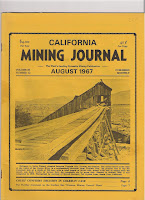click on image to read in actual size
History of the Value of gold part 2 What You Should Know About Gold
Q. What makes gold so precious?
A. Gold is precious for many practical reasons. For one,gold is very difficult and costly to mine and bring to market. For another it is scarce. Newly mined supplies are available only in small quantities. Moreover, no other substance-not silver, not diamonds combines gold characteristics of lustrous beauty, easy workability, rarity, and virtual indestructability.
As a monetary metal it has been the much chosen way for mankind to preserve capital and the fruit of his labor and protect them from inflation and monetary uncertainty.
As an artistic metal gold has been desired as an exellent medium for the jewlers craft. The ancient Egyptians were fashioning artifacts from gold as far back as 4000 B.C., and it is the first element to be mentioned in the Bible (Genesis 2:10-12).
Q. How much gold exists?
A. Since the dawn of history, about 89,000 metric tons of gold have been mined. If you could bring all this gold together in one place, it would only make a cube 18 yards on each side. A recent estimate gives us 40,000 metric tons of the probable attainable new gold supply-wich really is not much. That amount would add about 50% to the size of that block of gold prviusly described. In other words, much of the gold known to exist has been brought to the surface. This leaves a dwindling amount to be mined that we know of.
Remember this article obout the history of the value of gold was written over twenty years ago. So these numbers and descriptions have changed.
Q. How much new gold is mined each year?
A. Very little. Consolidated Gold Fields Limited, a London-based, recocgnized authority, estimated 1979 production at 1,242 metric tons. Generally speaking one must dig out, bring up, crush and process some 3 tons of ore to yield one ounce of fine gold. Moreover, gold mining costs have been escalating sharply and effecting the history value of gold. Deeper mines and better technology forcing the mining cost up.
The history of the value of gold is a multi part project. We are collecting articles on the subject and publishing them here. If you have anything to publish about the history of the value of gold contact us.
Q. Who produces the world's gold?
A. In 1979, South Africa, the leading producer, accounted for 55% of the worlds total gold production. The Soviet union ranked second, supplying an estimated 25%. Third was Canada with about 3.8% and then the United States with 2.1%. The rest was produced in rather small amounts in a rather large number of countries around the globe.
This article is just part of a large project of the history of the value of gold part 2. Written in the 80s.
Q. Is there enough gold to meet the worlds needs?
A. At the present rate of consumption, there is enough newly mined gold and gold from official reserves to meet the demand. If demand coninues at this rate, however, and mine production remains constant, gold may indeed be in short supply in the years to come.
remember this: The history of the value of gold can help tell the future!
Q. What is gold used for?
A. The primary uses for gold are in jewelry, investment, dentistry and electronics. Worldwide usage in 1979 (when this installation of the history of the value of gold was written)was:
Karat jewelry 42%
Investments 42%
Dentistry 5%
Electronics 5%
Others decorative, medals ect. 6%
Q. What is "fine" gold?
A. "Fine" is metallurgical terminology indicating the purity of the metal. Gold wich is 0.995 fine, for example, is 995 parts (out of one thousand) gold, or maybe more understansably expressed, 99.5% pure gold. Gold .995 fine is the most common standard for the bars traded in the international markets.
Q. What is "Karat" gold?
A. "Karat" gold refers to an alloy with a relatively high gold content and is more often referred to in jewelry. In the U.S., by federal law, nothing under 10 parts in 24 or 10-karat is permitted to bear the mark "karat". Karatage, then refers to the number of parts of gold compared to pure 24 karat gold. For example, 18 karat and 14 karat are 18/24 and 14/24 pure gold respectively.
Q. Is gold money?
A. History of the value of gold -Though not officially monetized, many people today consider it as money because it has the necessary requirements of currency-it is portable, available in various denomonations, easily recognizable and generally accepted. To the worlds monetary system, it has some advantages over currency.
It cannot be inflated by printing more of it; it cannot be devaluated by government decree; and it has been trusted as money longer than any currency in the history of the world. And almost all conties of the world hold gold as part of the reserve system.
Q. Why are investors returning to a belief in gold?
A. Paper money seems to be losing one of its essential attributes, that is, the ability to act as a storehouse of value. As inflation progresses on a world-wide scale, people once again turning to the traditional medium wich has proven the best, gold.The history of the value of gold has proven there has never been a time when gold was not valuable.
Read Part one of the history of the value of goldRead Part one of the history of the value of gold part 1
Latest gold Prices

